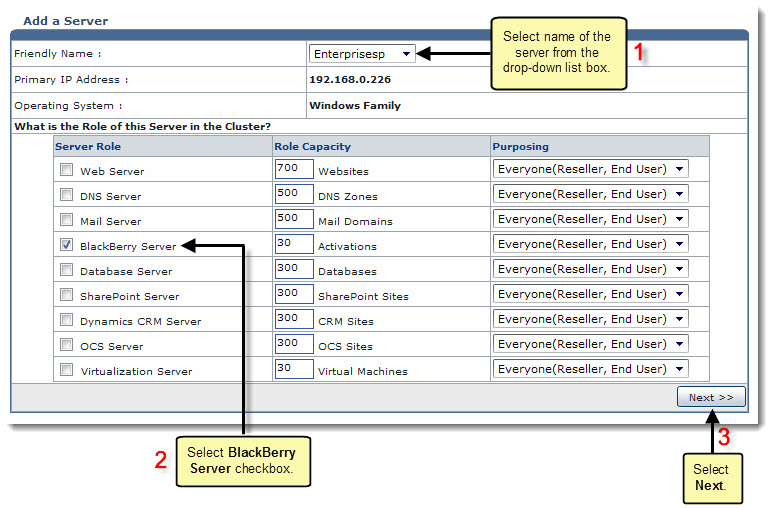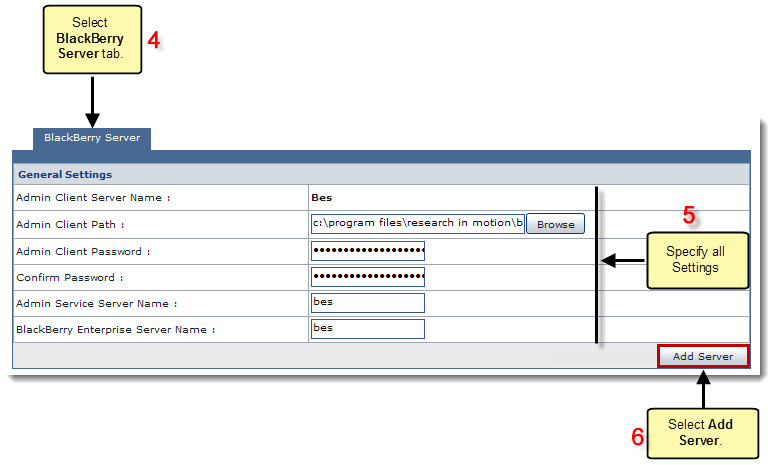|
|
|
|
Adding a BlackBerry Server
To add a blackberry server:
Log on to HC panel.
From
the left menu click General, and
then Server Manager.
The Server Manager page is displayed.
Click
Add Server.
The Add Server page is displayed.
Click the Friendly Name arrow and select the required server from the drop-down list box.
|
|
|
Under
Server Role, select the BlackBerry Server check box.
|
|
Every server can have one or more role(s) in the cluster. These roles need to be set every time a new server is added to the cluster. |
Under Role Capacity, type the number of Activations supported by the server.
Under Purposing, click the arrow and select the end user for the server.
|
|
The server role added in the cluster can be used either dedicatedly for a Reseller or for shared hosting. A role dedicated to a Reseller can not be used for any other user. |
|
|
|
Click Next.
The BlackBerry Server Configurations page is displayed.
Specify the General Settings:
|
|
The Admin Client Server Name shows name of the server where BESUserAdminClient.exe is placed and HC is installed. |
|
|
To provide all the paths, click Browse and enter the required path. |
Admin Client Path: Enter path for the Admin Client.
Admin Client Password: Type password for the Admin Client.
Confirm Password: Re-type password for the Admin Client.
|
|
It is a password that BESUserAdminClient.exe uses to communicate with BES User Admin Service. It is created at the installation time of BES User Admin Service. |
Admin Service Server Name: Type server name for the Admin Service.
BlackBerry Enterprise Server Name: Type name for the Enterprise Server.
Click Add
Server to update the cluster.
A BlackBerry Server is added with the specified information.
Adding A BlackBerry Server


Related Links:
|
Web Server (Linux) |
DNS Server (Linux) |
Database Server (Linux) |
Mail Server (Linux) |